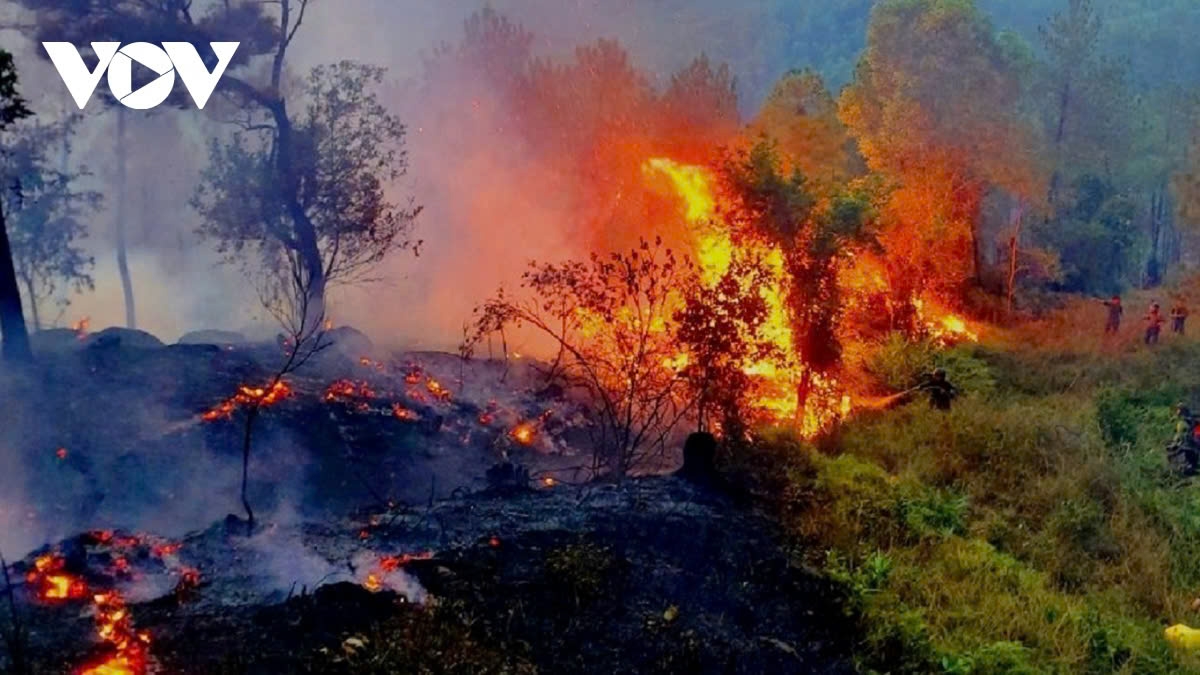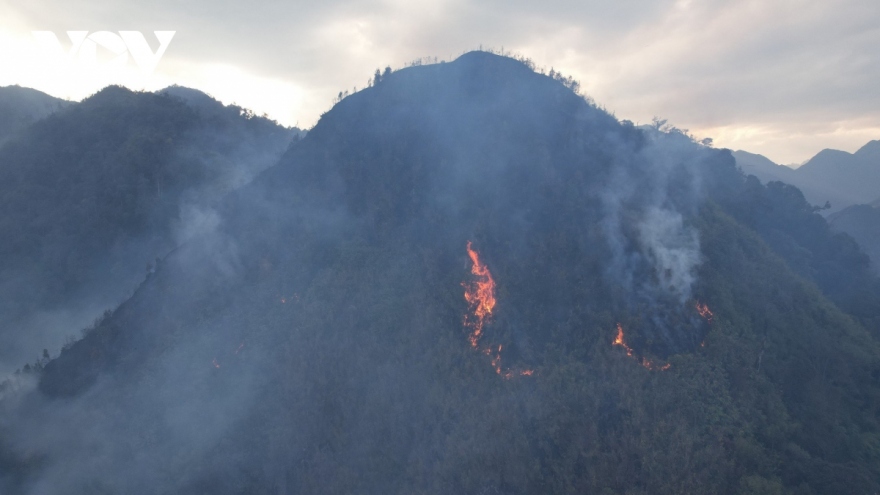Vietnam faces extreme forest fire risk due to intense heatwave nationwide
VOV.VN - The National Centre for Hydro-Meteorological Forecasting on April 17 issued a stark warning about an extremely high forest fire risk in many parts of the country due to an intense heatwave that is baking the northern, central and southern regions.

Meteorologists reported that the northwestern and southern regions on April 16 endured hot weather, with temperatures exceeding 36°C, and relatively low humidity levels.
The heatwave is anticipated to affect provinces from Thanh Hoa to Quang Ngai in the central region on April 17, with some areas recording more than 37°C.
The current heatwave across the northern and central regions is forecasted to last until at least April 22, while the southern region could face extended periods of high temperatures.
Due to scorching heat combined with low humidity, the risk of forest fires is significantly elevated during daytime hours.
Statistics show since the beginning of April 2025, a series of forest fires have been reported in several northern provinces of Vietnam due to prolonged dry and unfavourable weather conditions.
Affected areas include Ha Giang, Quang Ninh, Ha Long, Hai Phong, Lang Son, Cao Bang, Bac Kan, and Vinh Phuc, where dry, windy conditions and low humidity have heightened the risk of wildfires.
Most recently, a fire broke out in the Ba Sao forest of Kim Bang town, Ha Nam province, on April 16, burning down big trees and bushes. Competent agencies mobilised nearly 400 personnel to work overnight to prevent the fire spreading further.
The fire was brought under control on April 17 morning, according to local authorities.
Due to the ongoing intense heatwave, meteorologists have warned about an extremely high forest fire risk in 35 forested zones in southern provinces and a high forest fire risk in 92 forested zones in northern and central regions.
With these warnings, authorities have urged local governments and communities in high-risk areas to implement fire prevention measures, closely monitor forested zones, and remain on high alert during this period of severe weather.





